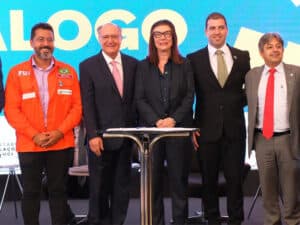
FutureShip containership optimization brings big fuel savings
Written by A series of 9,000 TEU containerships will cut fuel consumption by 10 percent and CO2 emissions by 90 tonnes a day as a result of an improvement in the hull lines.
A series of 9,000 TEU containerships will cut fuel consumption by 10 percent and CO2 emissions by 90 tonnes a day as a result of an improvement in the hull lines.
The improved is the result of work by a joint venture of the Chinese design office Maric and Germanischer Lloyd’s subsidiary FutureShip.
Shipowners Schulte Group (Germany) and Costamare Inc. (Greece) had requested the design review in order to optimize the vessel’s efficiency. As a result of the optimization, a smaller main engine can be installed than originally anticipated.
FutureShip’s optimization procedure generated 15,000 different hull designs and evaluated them numerically. The evaluation was based on computational fluid dynamics, where the flow around the ship is simulated in the computer to determine the actually required propulsion power.

The most efficient design was compared to the base design in model tests, which were performed in December at the Hamburg Ship Model Basin (HSVA). The photograph show the optimized hull during the model test.
The optimized model had a significantly lower total resistance than the base design. For the real ship this corresponds to substantial fuel and cost savings per day. The optimization expenses are amortized within a few days of operation for the series of six ships.
FutureShip specializes in developing and fine-tuning ship hull forms. The Germanischer Lloyd (GL) subsidiary systematically models, varies and analyzes many hundreds or thousands of ship designs in an automated process based on a unique parametric approach.
Together with the shipowner’s team, key objectives and constraints are identified. FutureShip sets up formal optimizations to explore the design space and to exploit promising options. Finally, FutureShip advises in choosing the best hull form and follows or carries out the associated tank testing. The company offers systematic and formal hydrodynamic optimization of hull, systematic and formal hydrodynamic optimization of appendages and surface and skin friction reduction.
The 9,000 TEU containership series will be built in China, delivery of the first ship from the shipyard is scheduled for 2013.
January 12, 2011





Leave a Reply
You must be logged in to post a comment.